Electricity consumers have spoken in 2014
Article 1 – Consumers Demand More Coal to Generate Electricity in 2014!
Consumer opinions favoring coal are now clearer than ever: The demand for coal to fuel electricity generators remains on the rise to satisfy this greater need in the U.S., much to the chagrin of Obama followers. The need for coal for electrical generation rose more than 8 percent from 2012 to 2014, an increase of 131 million megawatt-hours (or 131,000,000,000 kilowatt-hours) according to DOE’s Energy Information Administration (EIA).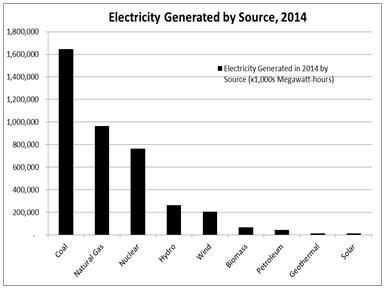
Is Coal an Important Power Source Across the U.S.?
As the chart illustrates (EIA, 2014), coal is the U.S. most important electrical generating source, amounting to 41 percent of all power demand– more than 1,645 million megawatt-hours of electricity. Natural gas ranks second at 24 percent and generates nearly 967 million megawatt-hours. Nuclear power ranks third at 19 percent or nearly 763 million megawatt-hours.
The U.S. map clearly illustrates the U.S.-wide predominance of all electricity sources by the colored pie slices for each state. The colored proportions represent the exceptional importance of coal, natural gas, nuclear, and hydro to produce electricity.
On a state-by-state basis, the largest electricity users in the U.S. are Texas, Pennsylvania, Florida, Illinois and California. The numbers within each state boundary represent its electricity consumption projected through 2014 in millions of kilowatt-hours (same as gigawatt-hours) [1]. These five states consume nearly one-third of all electricity generated from all sources across the U.S. and nearly one quarter of their electricity generated is from coal. On the regional basis, the map illustrates that coal is most important within larger population centers in the U.S. as wells as in the Mississippi Valley, Midwest and Great Plains states. The six largest users of coal-fired electricity are Texas, Indiana, Ohio, Pennsylvania, Illinois, and Kentucky which serves 49 million households. The remaining Atlantic and Gulf states use a combination of coal, natural gas, and nuclear power to fuel electric generating stations. In the Northwest states, the larger share of electrical generation is from hydropower sources. The states of California, Hawai’i and Nevada are the only states from which a share of electricity comes from geothermal and solar sources.
Article 2 – Can Coal-fired Electricity Be Replaced ?
Obama’s EPA has promulgated rules that coal must be phased out as a source of electrical generation within just a few years. But in 2014, coal meets the electrical energy needs of 150 million U.S. households (see pie charts). Coal-fired electricity is supplied to customers in 48 states which amount to 1,645 million megawatt-hours (1,645,000,000,000 kilowatt-hours). So the question is–what fuel will replace coal?
| These 150 million households use an average 1,200 watts an hour. This average electricity use translates to the continuous operation of one microwave oven 24 hours per day and for 365 days a year in these homes. |
Coal-fired electricity is currently relied upon in 36 states for 20 percent of more for electricity generation; in 18 states it provides more than 50 percent of their electricity. So is it possible to switch 150 million households from coal to another fuel in a short time as the EPA requires? Natural gas now accounts for 24 percent of electrical needs and supplies 88 million households. But can it increase enough to provide for so many users? Is there a sufficient supply of natural gas? Can natural gas pipelines be built rapidly 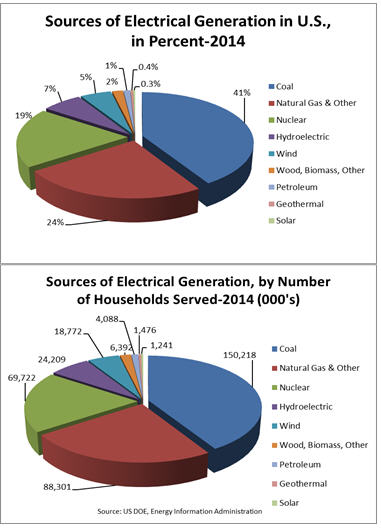 enough? Are there enough wells available to which pipelines can be built for natural gas? In light of Obama’s successful rejection of the Keystone XL pipeline is it at all likely that natural gas pipelines can be built? Is not a pipeline just a pipeline? Is it reasonable to approve or to disapprove a pipeline for what flows unseen and underfoot?
enough? Are there enough wells available to which pipelines can be built for natural gas? In light of Obama’s successful rejection of the Keystone XL pipeline is it at all likely that natural gas pipelines can be built? Is not a pipeline just a pipeline? Is it reasonable to approve or to disapprove a pipeline for what flows unseen and underfoot?
By their preferences for reliable power, utility customers show clearly that having electricity available, even if from coal boilers, is more important than curtailing use to reduce to carbon dioxide emissions. Al Gore says that carbon dioxide is to blame for climate change. By their need for electricity, utility customers have made it clear that the battle against climate change is dead.
Region-by-Region Differences for Coal-Fired Electricity
Clearly seven states within the Upper Mississippi River Valley (Pennsylvania on east to Missouri and Texas on west) [pink coloring] currently use the largest amount (in millions of kilowatt-hours) of coal-fired electricity (see US map). States in this group that rely more than 80 percent on coal-fired electricity are West Virginia, Kentucky, Indiana, and Missouri. Second, customers located in 18 Southeast, Midwest, and Great Plains states [orange colored] use a moderate amount (in millions of kilowatt-hours) of coal-fired electricity. Those in the second group that rely 65 percent or more on coal-fired boilers as a source of electricity include Utah, North Dakota, Wisconsin and Colorado.
Use of coal to generate electricity in 2014 increased more than 7 million to 15 million megawatt-hours in each of eight eastern and Midwest states compared to 2012, with increases led by Ohio at 18 percent from 2012 and followed by increases West Virginia, Indiana, Illinois, Pennsylvania, Virginia, Maryland, and Georgia. The orange-white striped bars in some states illustrate the increases in 2014 over 2012.
These differences highlight the factors that will severely impact the choices of which fuel could replace coal to generate electricity, and secondly if any replacement is possible or economical. Certainly there is no national conversation about how large the impact or what will be the ultimate source.
Article 3 – Is Wind Power Reliable, Affordable?
Wind provides an important source of electricity in many states, in particular where it’s a source of twenty percent or more of electric power. States that receive the largest percentage of electricity from wind power generation include Iowa, South Dakota, Kansas, Idaho, and North Dakota (see US map, Article 2), but the total electric needs in these states combined amounts to less than 12 percent of the total electric demand in Texas, the U.S. largest user of electrical power. Texas’ total consumption of electricity is projected at 399 million megawatt-hours in 2014.
Wind power is making in-roads as an electricity source due only to its federal subsidy of 2.33 cents per kilowatt-hour ($23.34 per MW[2]). The wind power subsidy about equals the wholesale cost to utilities supplied from Grand Coulee Dam hydro project in Washington State. Bonneville Power Administration (BPA) sells hydropower in Washington, Oregon, or Idaho where most retail customers pay an average of 5.5 cents per kilowatt-hour.
The problem with wind is its unreliability in times of need. A backup power source must always be available and standing by when the wind stops. This unsustainable choice became clear in Germany in December 2013 when 23,000 wind generators and one million solar PV systems that cost 108 million Euros were useless for a week due to the Europe’s inclement winter so gas or coal sources were called upon to fill the gap (Dec. 24—Die Welt). Similarly, during an 8-month period in Washington State [the U.S. 7th largest provider of wind power], for 23 days from January 1 to February 28, 2014 and for 23.5 days from October 11 to November 29, 2013, a total of 46.5 days, none of the state’s 18 wind generating facilities[3] with capacity of 2,833 MW provided even a tidbit of electric power according to BPA records[4][5]. Wind power in Washington State is projected to provide 7.53 million megawatt hours in 2014 which is an average of 860 megawatt-hours per hour. That’s efficiency at less than 30 percent. This means that 70 percent of the time the “switch is flipped”, the electricity will not be there. The obvious question is: If wind cannot provide the needed power, why consider it as a power source? When wind power is not available a standby source must be immediately plugged into the electrical grid. Why would a society promote electricity from dual sources, one that is reliable and the other unreliable when only one source is needed?
Wind Generators Require More Land, Diminish Land Values
The area needed for wind turbines is huge compared to other power sources, sometimes referred to as power density. The area of one 1.5 MW turbine requires 67 acres, a figure measured at the Vantage Wind power project in Washington, so that each megawatt of capacity requires 45 acres. Washington’s 18 wind facilities that occupy 130,000 acres in all, with a capacity of 7.7 watts per acre means that its power density is 2.3 watts per acre (0.0006 W/m2) at 30 percent efficiency. The power density[6] at coal or natural gas plants is 1,000 to 2,000 W/m2 because a 2,000 MW plant occupies about 1.5 sq mi in area. Using this comparison means that a coal or natural gas plant is 2,000/0.0006 = 3.3 million times more efficient use of space than wind power.
Owning of land near wind turbine farms is very problematical as wind farms can adversely affect property values, especially of recreational property. A three-year Ontario study of 600 sales near wind developments showed that values were reduced 20 to 25 percent, that properties were on the market more than twice as long, and a large number would not sell at any price (four times the number sold went unsold)[7]. An excellent documentation of wind energy’s problems, its disadvantages, lack of advertised performance, failure to reduce CO2 levels, killing of wildlife, noise concerns, impact on property values, jobs, and taxes from across two continents are in “A Problem with Wind Power”.[8]
Article 4 – Carbon Dioxide Benefits Mankind
The Obama administration wishes to end the use of coal to generate electricity because it believes that carbon dioxide (CO2) is a pollutant leading to (1) increasing temperature, (2) rising sea level, (3) more severe storms, (4) melting of polar sea ice, and (5) damage of coral reefs. Yet observations clearly show the contrary, that…
- Two satellite and four balloon datasets show temperature has not risen at surface for a period of 19 years[9] (and 26 years at 12-km altitude),
- Nine of the world’s best recording gauges show no rise in sea level[10]; at the same time sea levels at some West Pacific (e.g. the Maldives Islands[11] and Great Barrier Reef[12]) are falling, while land areas of Fennoscandia are rising[13]; (image) shows sea level today 13 cm below the gauge established in 1847[14]
- Severe storms have decreased[15] since 1998,
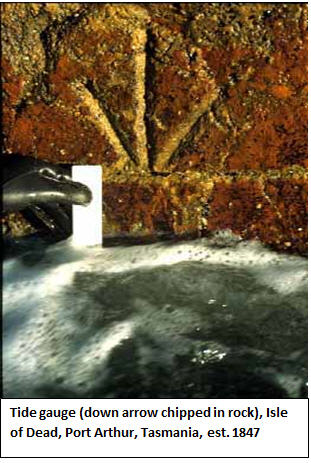
- Sea ice in the Antarctic now stands at a record high extent of 16.47 million sq. kilometers since record-keeping began 35 years ago[16],while global sea ice are maintains an above-average coverage area, and sea-level rise projection by IPCC is based on shoddy science[17]
- Carbon dioxide is a key to growth in coral reefs by the symbiotic relationship between zoox algae that coexist within the coral polyp organism; the algae uses CO2, while providing food to and consuming waste from the coral[18],
- The value to field grain production since 1962 due solely to increasing atmospheric carbon dioxide—subtracting improvements from cultivars and technology—provided a $3.2 trillion food benefit worldwide; the anticipated increase in carbon dioxide to 2050 will provide another $9.8 trillion food benefit from agri-products[19],
- The safe level of carbon dioxide in the International Space Station (ISS) and Apollo 13 LEM was allowed up to 2 percent (20,000 parts per million, or ppm),
- Carbon dioxide levels at 7,000 ppm benefitted the explosion of life during the Cambrian Period, provided life to the first forests during the Upper Devonian Period, contributed to explosion of fern forests during the Carboniferous Period leading to development of vast coal swamps, worldwide, that provide coal-fired electricity today, greatly expanded plant life during the Jurassic and Cretaceous Periods to permit super reptiles, the dinosaurs, to develop, and today in the atmosphere the trace gas carbon dioxide now stands at 390 ppm (0.039%), a record low level since the origin of the earth[20], and
- Temperature is unrelated to the concentration levels of carbon dioxide[21]. This relationship is borne out by many sources, including the 800,000-year ice core record retrieved by European, Russian, and U.S. investigators in Greenland and Antarctica[22] published at the NOAA Paleoclimatology project website.
So why is it, with such overwhelming evidence to the contrary about the miracle gas carbon dioxide, that the Obama Administration continues to spread such lies and propaganda
By Dave Boleneus
[1] Electrical generation projections to year-end 2014 were obtained by tripling the use reported by EIA for the January through April 2014 period.
[2] Per MW, this compares to $0.25 for natural gas, $0.44 for coal, $0.67 for hydro and $1.59 for nuclear
[3] http://en.wikipedia.org/wiki/List_of_power_stations_in_Washington
[4] http://transmission.bpa.gov/Business/Operations/Wind/
[5] http://issuu.com/rational/docs/2992_rational_look_fin#
[6] http://www.vaclavsmil.com/wp-content/uploads/docs/smil-article-power-density-primer.pdf
[7] http://scienceandpublicpolicy.org/images/stories/papers/reprint/trebilcock_wind_power.pdf
[8] http://www.aweo.org/problemwithwind.html
[9] http://wattsupwiththat.com/2014/09/01/new-paper-on-the-pause-says-its-19-years-at-surface &26-years-in troposphere/
[10] http://www.joelschwartz.com/pdfs/Holgate.pdf
[11] Nils-Axel Mörner Paleogeophysics & Geodynamics, Stockholm, Sweden morner@pog.nu
[12] Prof. Bob Carter, James Cook University, 4th Heartland Climate Conference, 2010
[13] Nils-Axel Morner, op. cit.
[14] http://staff.acecrc.org.au/~johunter/home_prof.html
[15] http://models.weatherbell.com/tropical.php
[16] http://arctic.atmos.uiuc.edu/cryosphere/antarctic.sea.ice.interactive.html based on satellite observations
[17] Soon, W. and Morner, N.-A., Dec. 20, 2012, Sea-level rise data based on shoddy science: ICECAP
[18] From review of 40 articles from scientific journals (2013-2014)
[19] http://www.co2science.org/education/reports/co2benefits/MonetaryBenefitsofRisingCO2onGlobalFoodProduction.pdf
[20] http://www.naturalclimatechange.us/
[21] www.petitionproject.org/gw_article/Presentation.ppt
[22] http://www.ncdc.noaa.gov/paleo/icecore/antarctica/domec/domec_epica_data.html
More News
{{ commodity.name }}
{{ post.title }}
{{ post.date }}
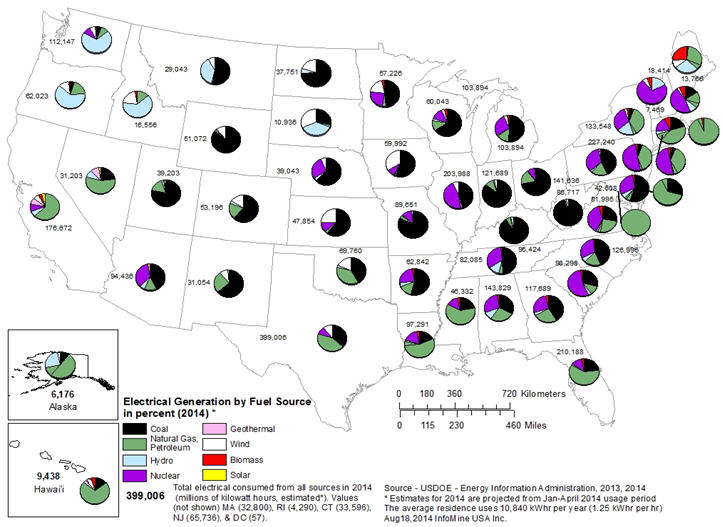
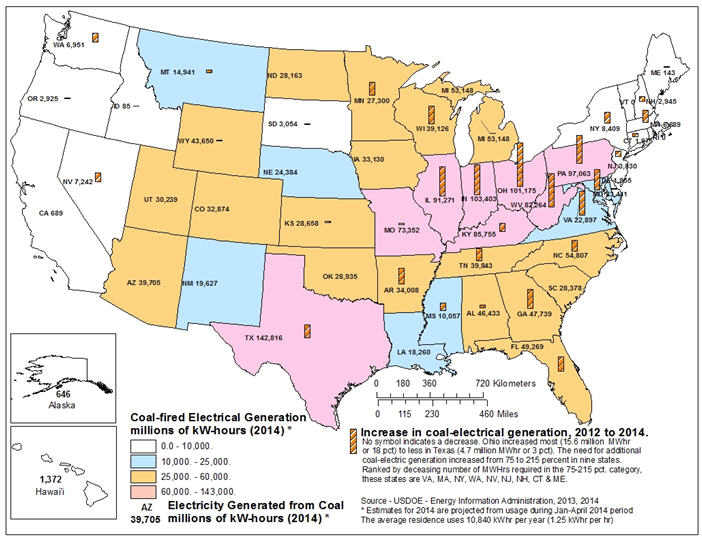

6 Comments
miner456
What the f*ck did I just read? Are you aware that the controversy among the scientific community regarding global warming is 97% to 3%? That’s 97% of scientists who are qualified to make a decision on the subject agree that CO2 is warming the earth. I love mining but I think I will have to break from this website if this is the type of author who has been supplying my information.
Roger Charles
A job well done, need more information like this
Silverval
Surprising how many states are dependent on coal, thank you for the great info!
Frank Greg
A job well done? Like the vagueness of Ref. [18]? Strangely, these are the references that should be explicit instead of the references to websites… I’m totally pro mining, oil and gas, etc. but we can’t keep acting as if the earth is doing just fine. We have a lot of problems (challenges) that need to be assessed and addressed right away, that’s exciting for an engineer!
klgmac
Unfortunately the president overlooks the not so obvious effects of his policies. Like this one.
http://www.benefitspro.com/2014/09/24/pbgc-to-cover-pensions-at-coal-company
trasker
Who cleaned the comments? Half of this dreck was debunked in multiple posts the first day it was posted! Like the fact that the sea level rise measurement graphics in [20] conflict with the no sea level rise case the author makes. You cite the Soon and Morner Washington Post piece that sea level gauges are affected by diving horses and you want to be taken seriously?